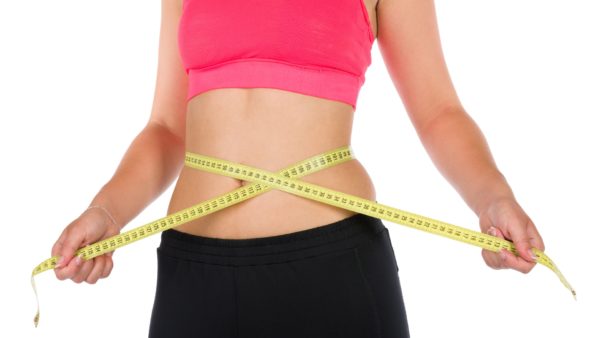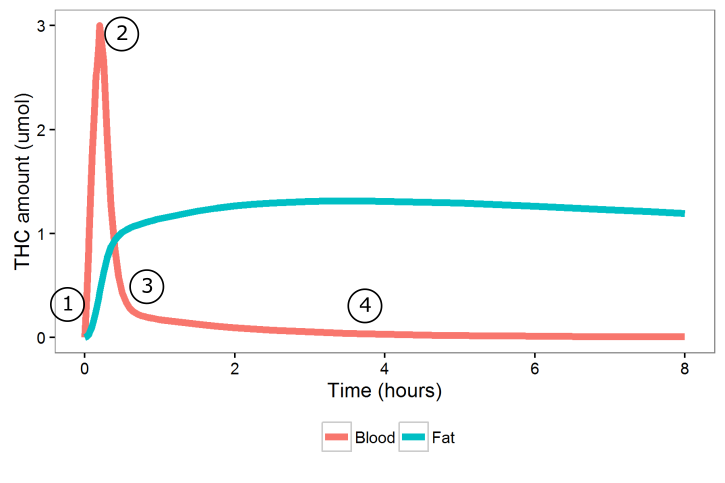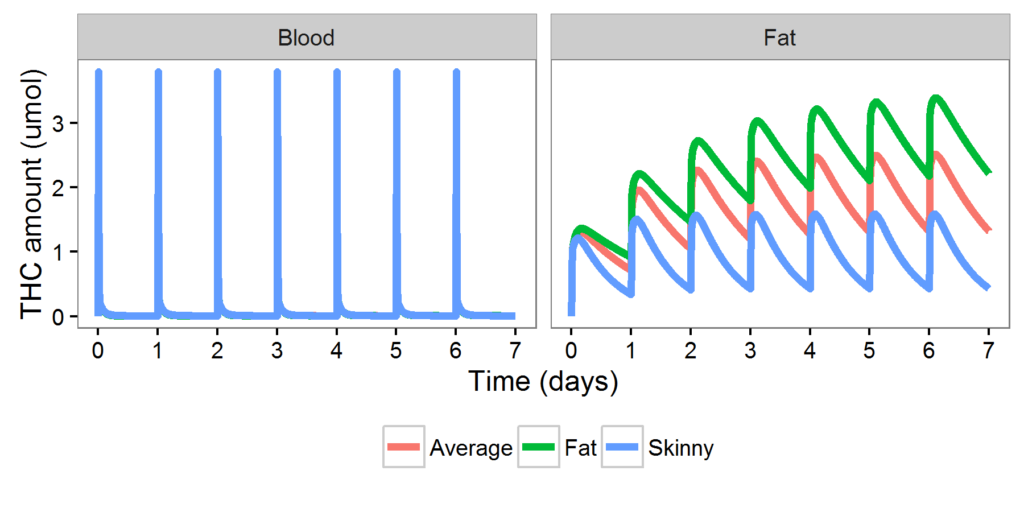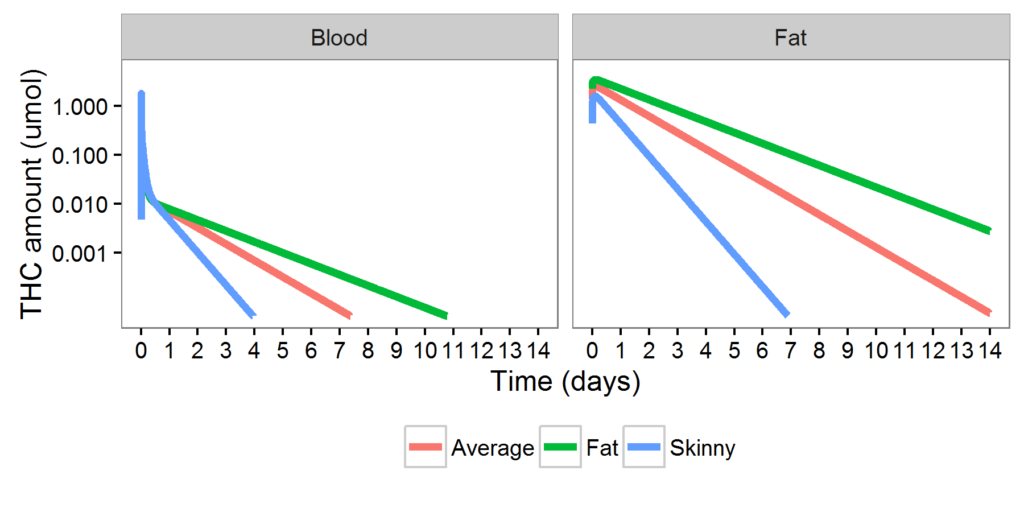
Fat Loss
Both THC and its first metabolite (11-OH-THC) are highly lipophilic. This means that they are preferentially stored in fat. Although estimates vary, the concentration of THC in your fat is around 100 times higher than in your blood. Unless you have just consumed THC, the amount in your blood is only a small fraction of the total THC in your body.
This fat storage is the reason that THC can stay in your body for a very long time. THC in your blood is actually metabolized very quickly as it passes through your liver, but it is not available for metabolism while in your fat.
THC Distribution to Body Fat
Here is what happens to THC levels over time in blood versus in fat. Note that these are not concentrations, but absolute amounts.

- Absorption Phase (First 15 minutes): THC is rapidly absorbed from the lungs after smoking, driving an increase in blood levels.
- First Distribution Phase (15 minutes to 1 hour): THC levels in the blood drop rapidly as it distributes into organs and fat tissue.
- Second Distribution Phase (1 hour to 4 hours): An equilibrium is reached between THC in blood and in most organs. There is still a net movement of THC from blood into fat tissue since this occurs more slowly than with other tissues.
- Elimination Phase (4 hours and beyond). THC in blood and fat tissue reach equilibrium. As THC in the blood is lost to liver metabolism, there is a net movement of THC from fat tissue back into blood.
THC is not actually “trapped” in fat in the sense that it depends on fat being burned to be released. THC molecules are always free to move back and forth between tissues.
THC Accumulation & Body Fat
Since everybody has a different body fat percentage, how does this effect THC accumulation? We can use a mathematical model of THC pharmacokinetics to examine the behavior of THC in 3 theoretical people: one with 10% body fat (skinny), one with 20% body fat (average), and one with 30% body fat (fat).

After smoking a joint per day, you can see that the profile of THC in the blood is almost completely overlapping in people with different levels of body fat (you can’t see the different lines because of the overlap).
However, there is a big difference in the accumulation of THC in body fat. The more fat a person has, the more THC is capable of accumulating in their body.
- The skinny person accumulates very little THC in their fat tissue, even after a week of regular smoking.
- The average person accumulates some THC in their fat, but this levels off after a few days
- The fat person accumulates a lot of THC in their fat. It takes a week of smoking weed every day to reach maximum levels in the fat.
THC Elimination & Body Fat
How does this THC that has accumulated in body fat affect how long it takes to clear your system? The plot below shows what happens after smoking one last joint and then becoming abstinent (note that it is a log scale):

The extra THC that has accumulated in the fat causes an extended time of THC elimination. The THC half-life in the blood is very different between a fat and skinny person, even though their THC metabolism is exactly the same. The dramatic difference in the THC half-life is purely due to how much THC is stored in their fat.
The first THC metabolite, 11-OH-THC, is also highly lipophilic and so the same thing can happen. Although the downstream metabolites (THC-COOH and the glucuronide) are less lipophilic, their concentrations are driven by THC and 11-OH-THC.
Fat Loss & THC Detox
It is already experimentally proven that starting with lower body fat will reduce the time to clear THC (see our THC detox calculator for more details). But what happens once THC has already accumulated? Will fat loss help or hurt your THC detox goals?
Unless you have a very short amount of time (less than 5 days), fat loss will virtually always help. In fact, I believe that it is the single most effective way to permanently reduce THC levels. Although levels of 11-OH-THC and other metabolites can be reduced by inducing or inhibiting certain enzymes (as well as a few other tricks you will learn at CannaPass), THC is remarkably stubborn.
I have heard concerns from many people about increased THC levels after fat loss. If you don’t exercise for a day or two before you need to take a drug test, then this should not be a concern.
A quick thought experiment: let’s assume each day of intense diet/exercise leads to loss of 1% of your body fat and therefore release of 1% of fat-stored THC. On day 1, your blood THC levels may be slightly higher and downstream metabolites will be higher as a result. But this increase works its way through your body fairly quickly. By day 5, your THC levels may be 1% higher due to the THC released that day, but it will be 4% lower due to THC released the previous 4 days that has already been eliminated from your body. The net reduction is 3%.
This concern is also addressed in the 1 Week Detox protocol. You can take an herbal supplement that prevents THC released from fat from going down the metabolic pathway leading to detectable metabolites in the urine.
FAQ
I’ve investigated every method I’ve heard about and found no evidence that they actually work.
This method is the most difficult to estimate because it entirely depends on your body fat % to begin with and how much fat you lose.
You can expect that the reduction will be about proportional to how much fat you lose. In other words, if you start with 30 pounds of body fat (15% body fat for a 200 pound person) and lose 3 pounds (10% of your body fat), then your urine THC metabolite levels will be 10% lower compared to if you never lost that weight.
There will be some delay between losing the weight and the lower concentration though.

